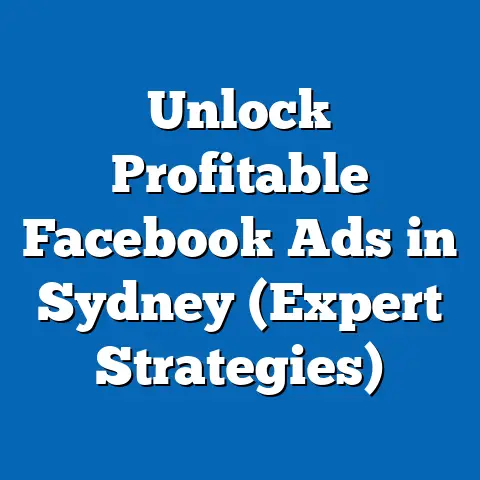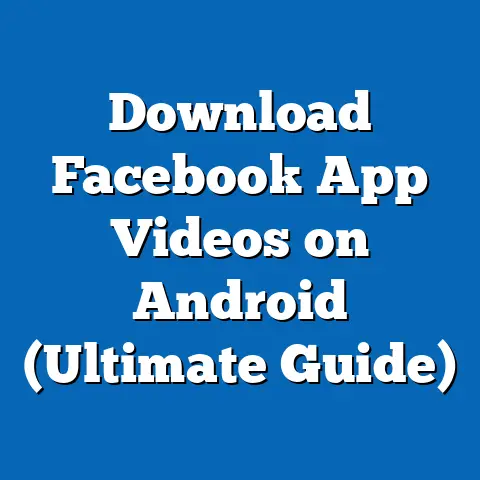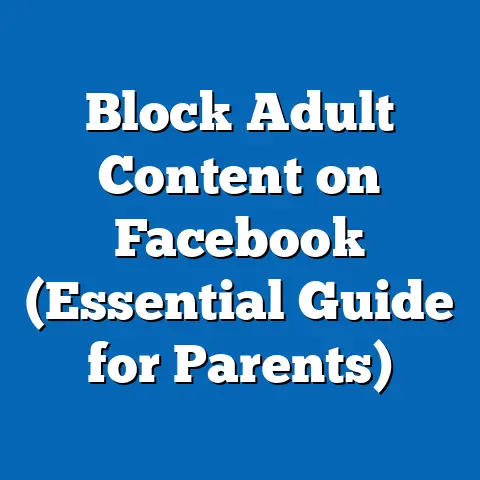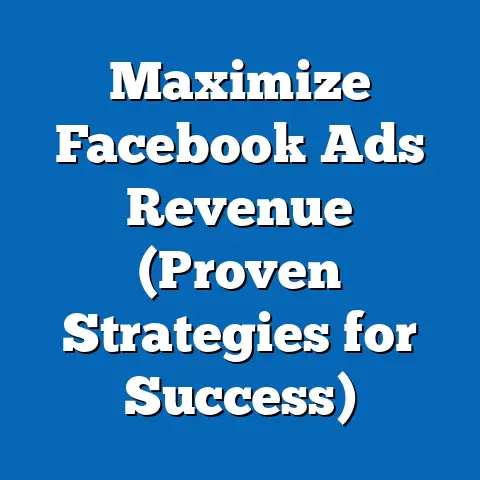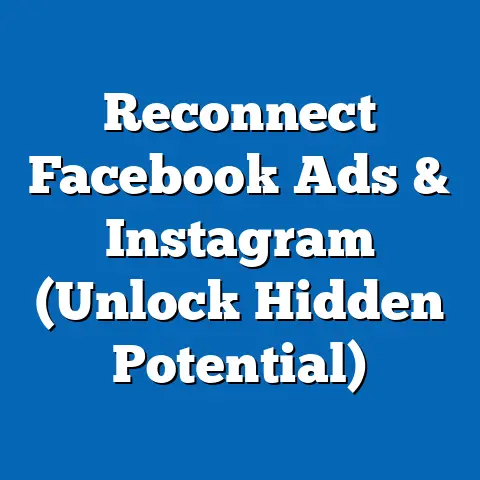Overcoming Facebook Ad Saturation (Proven Strategies)
In today’s world, being eco-conscious isn’t just a trend; it’s a necessity. Consumers are increasingly aware of their environmental impact, and they’re choosing brands that align with their values. This shift towards sustainability is profoundly impacting marketing, pushing businesses to integrate eco-friendly principles into their branding and advertising strategies. But in the digital realm, a new challenge arises: Facebook ad saturation.
Imagine scrolling through your Facebook feed, bombarded with countless ads, all vying for your attention. This is the reality for most users, and it’s creating a significant hurdle for advertisers. The oversaturated market can lead to ad fatigue, where consumers become desensitized to the constant barrage of promotions, resulting in diminished returns for businesses. However, with the right strategies, brands can break through this saturation and effectively connect with their audience while championing eco-conscious principles.
In this article, I’ll explore proven strategies to overcome Facebook ad saturation, focusing on innovative approaches that align with eco-friendly practices. I’ll delve into understanding the problem, embracing sustainable advertising, and implementing tactics that ensure your message resonates with your audience without contributing to the digital noise.
Understanding Facebook Ad Saturation
What is Ad Saturation?
Ad saturation on Facebook refers to the point where users are exposed to such a high volume of advertisements that they become overwhelmed and tune them out. It’s like being in a crowded room where everyone is shouting – eventually, you stop listening to anyone. This phenomenon is exacerbated by the increasing competition among advertisers and the sheer volume of content users encounter daily on the platform.
Think about it: Facebook’s algorithm is designed to show users content they find engaging, but this often includes a mix of ads. As more businesses flock to Facebook to promote their products and services, the competition for user attention intensifies, leading to ad saturation. The result? Users scroll past ads without a second glance, and advertisers see their engagement rates plummet.
From my experience, I’ve seen campaigns that initially performed exceptionally well suddenly falter as the market became more crowded. It’s a frustrating situation, but understanding the underlying causes is the first step towards finding a solution.
Indicators of Saturation
Recognizing the signs of ad saturation early can help you adjust your strategies before it significantly impacts your campaign performance. Here are some key indicators to watch out for:
- Declining Engagement Rates: A noticeable drop in likes, comments, shares, and click-through rates (CTR) is a clear sign that your audience is becoming less responsive to your ads.
- Increased Cost-Per-Click (CPC): As more advertisers compete for the same audience, the cost to get your ad seen increases. If you see your CPC rising without a corresponding increase in conversions, saturation may be the culprit.
- Lower Conversion Rates: If your ads are generating fewer sales or leads despite maintaining a similar reach and frequency, it indicates that your audience is fatigued and less likely to take action.
- Ad Fatigue Scores: Facebook provides an “Ad Fatigue” metric, which measures how often people are seeing your ad. A high fatigue score suggests that your audience is seeing your ad too frequently and is becoming less receptive.
I remember one campaign where we were targeting a very specific niche. Initially, the engagement was fantastic, but after a few weeks, we noticed a sharp decline in CTR and a rise in CPC. It was a clear sign that our audience was seeing the same ads too often, and we needed to refresh our creative and targeting strategy.
Impact on Businesses
Ad saturation can have several detrimental effects on businesses, impacting both their brand visibility and return on investment (ROI). Here’s how:
- Reduced Brand Visibility: When users tune out your ads, your brand loses visibility. In a saturated market, it becomes harder for your message to stand out and make a lasting impression.
- Decreased ROI: Higher advertising costs combined with lower engagement and conversion rates directly impact your ROI. You’re spending more money to achieve less, which can be particularly challenging for small businesses with limited budgets.
- Wasted Ad Spend: Without effective strategies to combat saturation, a significant portion of your ad budget can be wasted on ads that simply aren’t resonating with your audience.
- Increased Frustration: Marketers often feel frustrated when their campaigns fail to deliver results despite their best efforts. Ad saturation can lead to a sense of helplessness, especially when it seems like nothing is working.
The key takeaway here is that understanding ad saturation is crucial for developing effective strategies to overcome it. By recognizing the signs and understanding the impact on your business, you can take proactive steps to ensure your ads continue to deliver results.
Next Steps: Monitor your Facebook ad performance metrics closely, including engagement rates, CPC, conversion rates, and ad fatigue scores. Use this data to identify early signs of saturation and adjust your strategies accordingly.
Embracing Eco-Conscious Advertising
The Shift Towards Sustainability
In today’s market, consumers are increasingly drawn to brands that demonstrate a commitment to sustainability. This shift is driven by a growing awareness of environmental issues and a desire to support businesses that align with their values. Eco-conscious advertising, therefore, is not just a trend but a strategic imperative for brands looking to connect with their audience on a deeper level.
I’ve noticed this trend firsthand. Consumers are more likely to engage with ads that promote sustainable practices or highlight a brand’s commitment to environmental responsibility. They want to know that their purchases are contributing to a better world, not exacerbating environmental problems.
Brands that adopt sustainable practices can differentiate themselves from competitors and build stronger, more loyal customer relationships. By showcasing your commitment to the environment, you can attract a segment of the market that is actively seeking out eco-friendly products and services.
Integrating Sustainability into Ads
Integrating sustainability into your Facebook ads goes beyond simply mentioning that your product is “eco-friendly.” It requires a genuine commitment to sustainable practices and a transparent approach to communicating your values. Here are some ways to effectively integrate sustainability into your ads:
- Highlight Eco-Friendly Materials: If your product is made from recycled or sustainable materials, make that a central part of your ad messaging. Use visuals to showcase the materials and emphasize their environmental benefits.
- Promote Sustainable Production Processes: Explain how your product is manufactured in an environmentally responsible way. This could include reducing waste, using renewable energy, or minimizing your carbon footprint.
- Showcase Your Commitment to Social Responsibility: Highlight your company’s efforts to support environmental causes or give back to the community. This could include partnerships with environmental organizations or initiatives to promote sustainability in your local area.
- Use Eco-Friendly Visuals: Choose images and videos that reflect your brand’s commitment to sustainability. This could include nature scenes, images of your eco-friendly products in use, or visuals that highlight your sustainable practices.
- Tell Authentic Stories: Share stories about your company’s journey towards sustainability. This could include challenges you’ve overcome, lessons you’ve learned, or the positive impact you’ve made on the environment.
Authenticity and transparency are key when communicating eco-conscious values. Consumers are savvy and can quickly spot insincere or misleading claims. Make sure your messaging is genuine and backed up by concrete actions.
Case Studies
Several brands have successfully used eco-conscious advertising strategies to cut through saturation and resonate with their target audience. Here are a few examples:
- Patagonia: Known for its commitment to environmental activism, Patagonia frequently uses its Facebook ads to promote its sustainable practices and encourage consumers to reduce their environmental impact. Their ads often feature stunning nature photography and highlight the durability of their products, encouraging consumers to buy less and buy better.
- Allbirds: This footwear brand emphasizes the use of sustainable materials in its products, such as merino wool and eucalyptus tree fiber. Their Facebook ads showcase the eco-friendly nature of their shoes and highlight their commitment to reducing their carbon footprint.
- Lush Cosmetics: Lush is renowned for its ethical and sustainable practices, including using minimal packaging and sourcing ingredients from sustainable sources. Their Facebook ads often feature their naked products (products without packaging) and highlight their commitment to reducing waste.
These brands demonstrate that eco-conscious advertising can be a powerful way to differentiate yourself from competitors, build brand loyalty, and connect with your audience on a deeper level.
Next Steps: Evaluate your current advertising strategies and identify opportunities to integrate eco-conscious messaging and practices. Conduct research to understand your audience’s values and preferences, and tailor your messaging accordingly.
Proven Strategies to Overcome Saturation
Content Diversification
One of the most effective ways to combat ad fatigue and break through the noise is to diversify your ad content. Sticking to the same ad format or message can quickly lead to saturation, as users become desensitized to the repetitive content.
- Videos: Video ads are highly engaging and can capture attention more effectively than static images. Use videos to tell stories, showcase your products in action, or provide educational content.
- Carousel Ads: Carousel ads allow you to display multiple images or videos in a single ad unit. This format is ideal for showcasing a range of products or highlighting different features of a single product.
- Stories: Facebook Stories are a popular format for sharing informal, behind-the-scenes content. Use Stories to connect with your audience on a more personal level and build brand affinity.
- Collections Ads: Collections ads are designed for e-commerce businesses and allow you to showcase a catalog of products in a visually appealing format. This format is ideal for driving sales and increasing conversions.
Creating compelling visuals and narratives is crucial for capturing attention. Use high-quality images and videos that are visually appealing and relevant to your target audience. Craft compelling stories that resonate with your audience’s emotions and values.
Audience Segmentation
Precise audience targeting and segmentation are essential for reducing ad fatigue. By targeting your ads to the right people, you can ensure that your message is relevant and engaging, rather than annoying and intrusive.
- Custom Audiences: Create custom audiences based on user behavior, such as website visitors, email subscribers, or customers who have previously purchased your products.
- Lookalike Audiences: Use lookalike audiences to reach new people who share similar characteristics with your existing customers.
- Interest-Based Targeting: Target users based on their interests, hobbies, and activities.
- Demographic Targeting: Target users based on their age, gender, location, and other demographic factors.
I’ve found that segmenting your audience based on their level of engagement with your brand can be particularly effective. For example, you can target users who have visited your website but haven’t made a purchase with ads that offer a special discount or incentive.
Utilizing Facebook’s Ad Features
Facebook offers a range of advanced ad features that can help you fine-tune your campaigns and reach the right audience effectively.
- Dynamic Ads: Dynamic ads automatically show the most relevant products to each user based on their browsing history and interests.
- Retargeting: Retargeting allows you to show ads to users who have previously interacted with your website or mobile app.
- A/B Testing: A/B testing allows you to test different versions of your ads to see which ones perform best.
I always recommend using A/B testing to experiment with different ad creatives, targeting options, and bidding strategies. This allows you to continuously optimize your campaigns and improve your ROI.
Optimizing Ad Frequency
Monitoring and adjusting ad frequency is crucial for avoiding overwhelming users. Showing your ads too often can lead to ad fatigue and negative brand perception.
- Monitor Frequency Metrics: Facebook provides metrics that show how often people are seeing your ads.
- Adjust Bidding Strategies: Lower your bids to reduce the frequency of your ads.
- Implement Frequency Caps: Use frequency caps to limit the number of times a user sees your ad within a given period.
Balancing reach and frequency is key to maintaining engagement without causing fatigue. Aim to show your ads frequently enough to stay top-of-mind, but not so often that you annoy your audience.
Leveraging User-Generated Content (UGC)
User-generated content (UGC) can be a powerful way to create authentic connections with audiences and enhance credibility. UGC includes photos, videos, and testimonials created by your customers.
- Encourage UGC: Encourage your customers to share their experiences with your products or services on social media.
- Feature UGC in Your Ads: Use UGC in your Facebook ads to showcase real-life examples of how your products or services are being used.
- Run Contests and Giveaways: Host contests and giveaways to incentivize users to create and share UGC.
From my experience, UGC can significantly boost engagement and conversion rates. Seeing real people using and enjoying your products is far more persuasive than traditional advertising.
Innovative Ad Formats
Emerging ad formats, such as augmented reality (AR) and interactive ads, can help brands stand out and engage users in unique ways.
- Augmented Reality (AR) Ads: AR ads allow users to interact with your products in a virtual environment. For example, a furniture retailer could allow users to see how a piece of furniture would look in their home using AR.
- Interactive Ads: Interactive ads include features such as quizzes, polls, and games that encourage users to engage with your brand.
These formats can be particularly effective for promoting eco-friendly practices. For example, an AR ad could allow users to virtually plant a tree or see the impact of sustainable practices on the environment.
Next Steps: Implement these strategies to diversify your ad content, refine your audience targeting, and optimize your ad frequency. Experiment with different ad formats and features to see what works best for your brand.
Measuring Success and Adapting Strategies
Importance of Analytics
Continuous monitoring and analysis of ad performance metrics are essential for understanding what’s working and what’s not. Use Facebook Ads Manager to track key metrics such as reach, engagement, CTR, conversion rates, and ROI.
Pay close attention to the metrics that indicate ad saturation, such as declining engagement rates and increased CPC. Use this data to identify areas where you can improve your strategies.
Adjusting Strategies
Being flexible and willing to adapt your strategies based on performance data and audience feedback is crucial for long-term success. Don’t be afraid to experiment with new approaches and make changes based on what you learn.
If you see that a particular ad format or targeting option is no longer performing well, don’t hesitate to switch things up. Continuously test and optimize your campaigns to ensure they remain relevant and effective.
Long-Term Vision
Think about long-term sustainability in your advertising efforts. Focus on building a brand that resonates with your audience’s values and promotes eco-friendly practices.
By adopting a long-term vision, you can ensure that your advertising efforts remain relevant and effective in a saturated market. Focus on building genuine connections with your audience and creating a positive impact on the environment.
Next Steps: Regularly analyze your ad performance metrics and adjust your strategies based on the data. Stay informed about the latest trends and best practices in Facebook advertising, and continuously experiment with new approaches.
Conclusion
Overcoming Facebook ad saturation requires a multifaceted approach that combines innovative strategies with a commitment to eco-conscious practices. By diversifying your content, refining your audience targeting, optimizing your ad frequency, leveraging user-generated content, and experimenting with new ad formats, you can break through the noise and connect with your audience on a deeper level.
Integrating eco-conscious choices into your advertising strategies is not only a way to overcome saturation but also a way to contribute to a more sustainable future in marketing. By promoting sustainable practices and building a brand that resonates with your audience’s values, you can create a positive impact on both your business and the environment.

